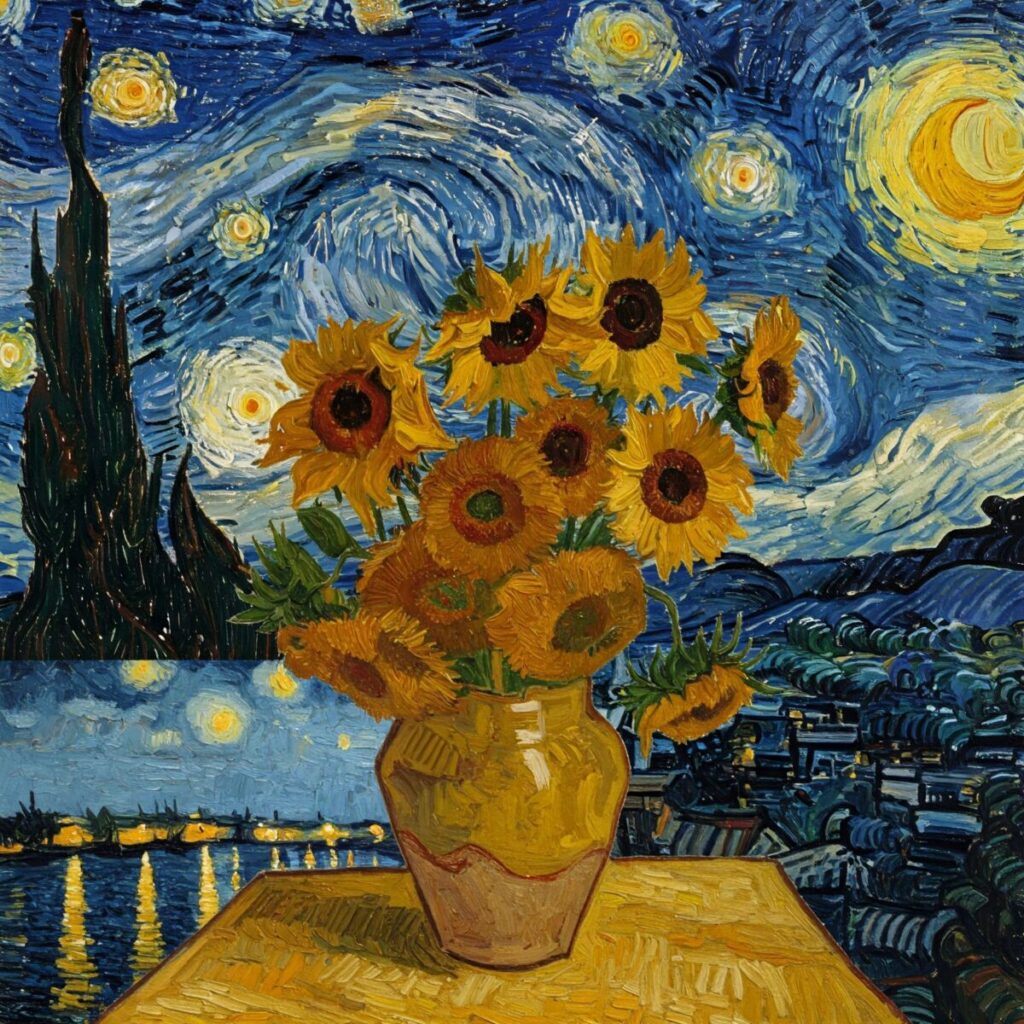Imagine being able to paint people so realistically they almost seem to breathe. That was the magic of John Singer Sargent, an American artist who became the rock star of portrait painting in the late 19th and early 20th centuries. He wasn’t just copying faces; he was capturing personalities with bold, confident brushstrokes that brought his subjects to life. Exploring the world of the top 10 John Singer Sargent paintings is like stepping into a time machine, visiting the elegant drawing rooms and sun-drenched landscapes of a bygone era. Sargent was a master of light, color, and character, and his work continues to dazzle art lovers today.
Portrait of Madame X (1884)
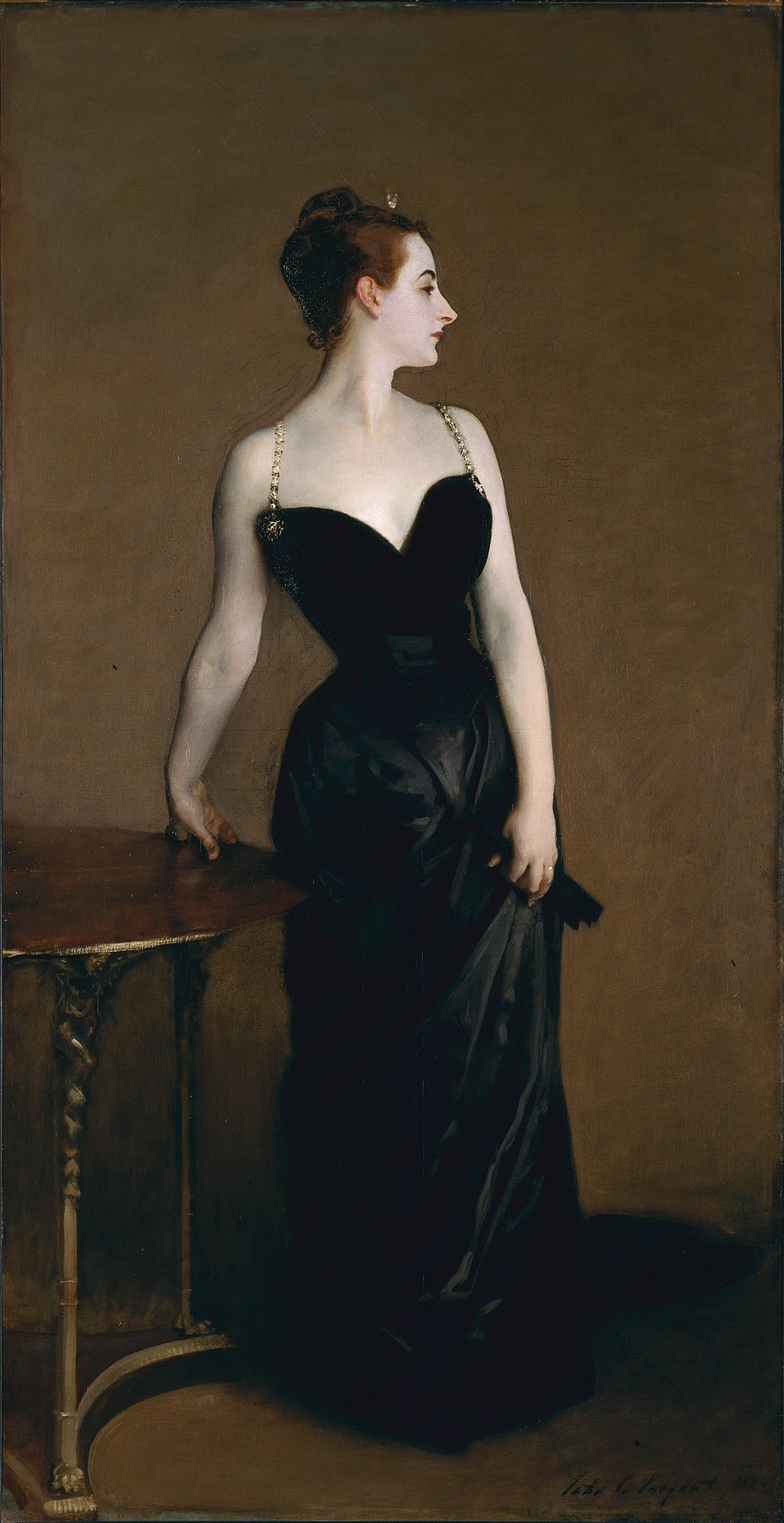
Description: This is perhaps Sargent’s most famous and controversial work. It depicts Virginie Gautreau, a Parisian socialite known for her beauty. The original version, with one of her jeweled straps fallen off her shoulder, caused a huge scandal at the Paris Salon, as it was considered far too daring for the time. Sargent later repainted the strap in its proper place. The public outrage over this painting was so intense that it prompted Sargent to leave Paris and move to London.
Painting Techniques: Sargent used smooth, long brushstrokes to create the flawless, pale skin of Madame Gautreau, contrasting sharply with the dark, dramatic background. The technique, known as ‘alla prima’ (wet-on-wet), allowed him to work quickly and capture a sense of immediacy.
Location: Metropolitan Museum of Art, New York City
Estimated Value: Priceless
Carnation, Lily, Lily, Rose (1885-1886)
The magical glow of ‘Carnation, Lily, Lily, Rose’ by John Singer Sargent, a triumph of Impressionist light.
Description: Step into a magical English garden at twilight. This enchanting painting shows two young girls in white dresses lighting Japanese lanterns among a sea of flowers. Sargent worked on this massive canvas outdoors over two summers, painting for only a few minutes each evening to capture the perfect purplish light of dusk. To maintain the exact look of the flowers throughout the two seasons he worked on the painting, Sargent replaced the real flowers with artificial ones as they wilted.
Painting Techniques: This piece showcases Sargent’s Impressionist influences, with thick, textured brushwork (impasto) on the flowers and lanterns that makes them seem to glow. He masterfully captured the fleeting quality of twilight.
Location: Tate Britain, London
Estimated Value: Priceless

El Jaleo (1882)
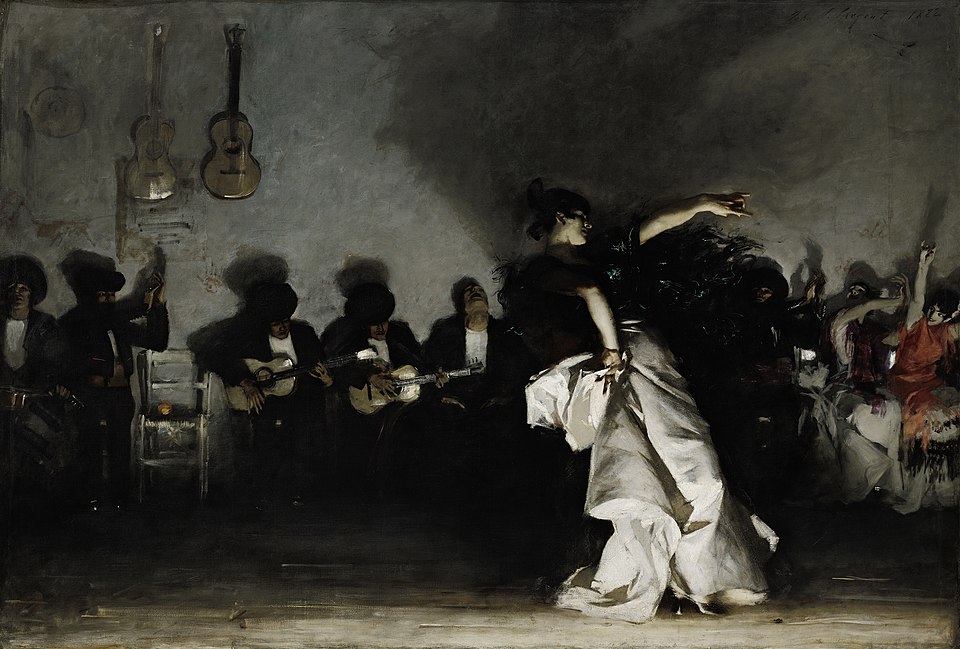
The dramatic energy of Spain captured in ‘El Jaleo’ by John Singer Sargent.
Description: Feel the rhythm and energy of a Spanish flamenco dance in this dramatic, theatrical painting. A central dancer strikes a powerful pose, her white dress a slash of light against a dark, moody background of musicians and singers. The painting is so large it almost feels like you are in the room with them, hearing the music and stomping feet. The painting’s title, ‘El Jaleo,’ is a Spanish word that refers to the ruckus of shouts, clapping, and stomping that accompanies a flamenco performance.
Painting Techniques: Sargent used a limited color palette of blacks, whites, and earth tones to create a powerful sense of drama. The use of strong light and shadow, a technique called chiaroscuro, highlights the dancer’s dynamic movement.
Location: Isabella Stewart Gardner Museum, Boston
Estimated Value: Priceless
The Daughters of Edward Darley Boit (1882)

Description: This is not your typical family portrait. Instead of a stiff, formal pose, Sargent shows the four Boit sisters scattered in their Parisian apartment’s entryway. The composition is mysterious and unusual, with two girls cloaked in shadow in the background and two others in the light. It makes you wonder what each girl is thinking. The two giant Japanese porcelain vases depicted in the painting are on display in the same gallery, flanking the artwork itself.
Painting Techniques: The painting is celebrated for its incredible sense of depth and psychological mystery. Sargent’s loose, fluid brushwork on the girls’ pinafores contrasts with the detailed rendering of the giant Japanese vases, which were a prized family possession.
Location: Museum of Fine Arts, Boston
Estimated Value: Priceless
Lady Agnew of Lochnaw (1892)

The captivating gaze of ‘Lady Agnew of Lochnaw’, a masterful portrait by John Singer Sargent.
Description: When this portrait was exhibited, it made Sargent an overnight sensation in Britain. Lady Agnew looks directly at the viewer with a confident, intelligent expression, as if she’s about to share a secret. She isn’t just posing; she’s engaging with you. Her relaxed posture and the vibrant colors make this a truly modern portrait for its time. After this portrait was exhibited, Lady Agnew’s health, which had been poor, reportedly improved, and she became a prominent London socialite.
Painting Techniques: Sargent’s brushwork is incredibly fluid and economical, especially in the shimmering silk of Lady Agnew’s dress and the colorful sash. He used a limited palette but achieved a rich and lively effect, showcasing his technical brilliance.
Location: Scottish National Gallery, Edinburgh
Estimated Value: Priceless
Gassed (1919)
A powerful and haunting masterpiece, ‘Gassed’ by John Singer Sargent, depicts the tragedy of World War I.
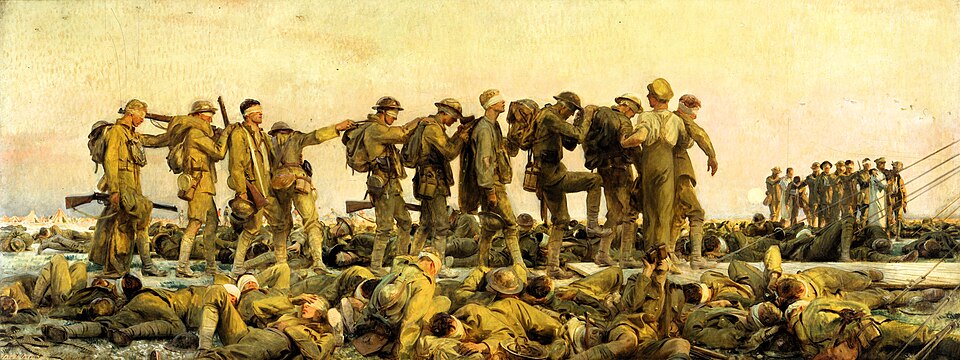
Description: A powerful departure from his society portraits, this enormous painting depicts the horrific aftermath of a mustard gas attack during World War I. A line of blinded soldiers, each with a hand on the shoulder of the man in front, shuffle towards a medical tent. It’s a haunting and deeply moving image of the human cost of war. The painting is massive, measuring over 7.5 feet tall and 20 feet long, designed to immerse the viewer in the scene.
Painting Techniques: Sargent used a more classical, structured composition for this piece, different from his fluid portraits. The frieze-like arrangement of the soldiers gives them a monumental, almost sculptural quality, emphasizing their shared suffering and heroism.
Location: Imperial War Museum, London
Estimated Value: Priceless
Dr. Pozzi at Home (1881)
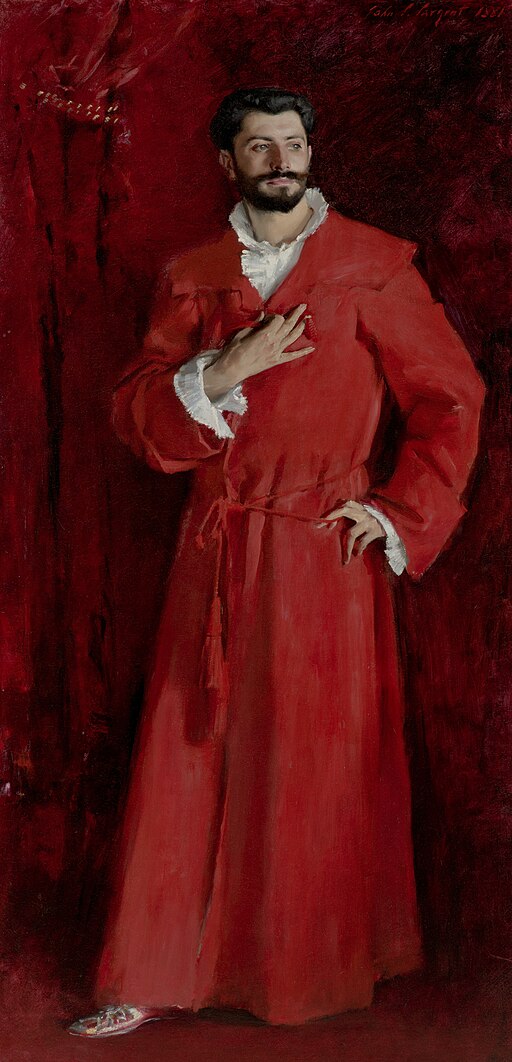
Description: This full-length portrait of a handsome and famous Parisian gynecologist, Dr. Samuel-Jean Pozzi, is striking and intense. Dressed in a brilliant scarlet dressing gown, he looks more like a grand prince or a cardinal than a doctor. The painting is a bold statement of confidence and charisma. Dr. Pozzi was a famous womanizer, and Sargent’s choice to paint him in such an intimate, flamboyant robe hints at his seductive personality.
Painting Techniques: The star of the show here is the color red. Sargent used various shades of crimson and scarlet to create a portrait that is both elegant and shockingly intimate. His masterful handling of the fabric’s texture makes the dressing gown seem almost touchable.
Location: Hammer Museum, Los Angeles
Estimated Value: Priceless
Mrs. Fiske Warren (Gretchen Osgood) and Her Daughter Rachel (1903)
Description: This portrait is a beautiful depiction of motherly love and high-society elegance. Gretchen Osgood Warren, an accomplished singer and poet, sits with her daughter Rachel. Sargent perfectly captures the textures of the luxurious fabrics, the intricate pearl necklace, and the tender connection between the two figures. The grand chair in which Mrs. Warren sits was a prop from Sargent’s studio, used in several other portraits to add a sense of European grandeur.
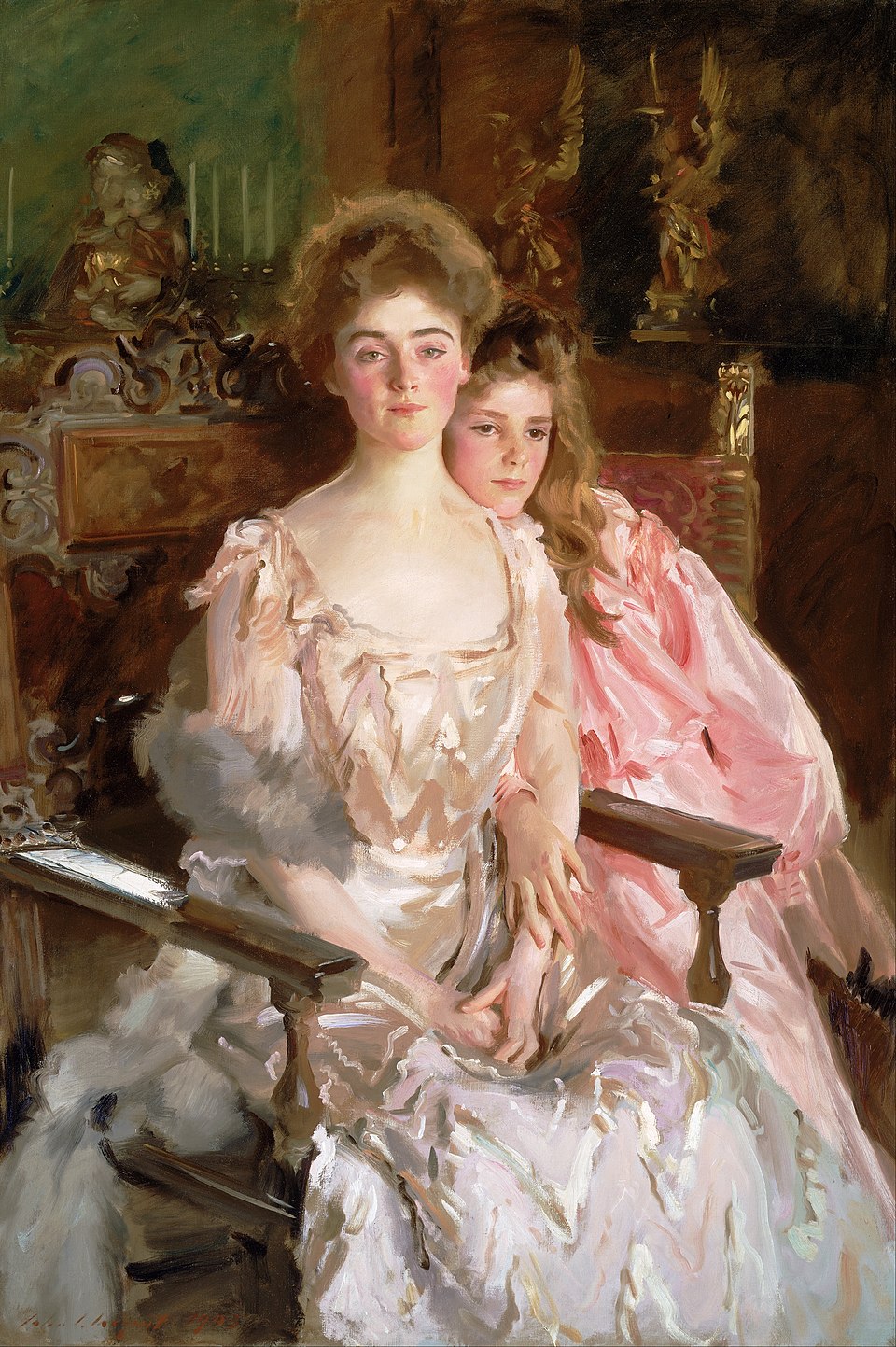
Painting Techniques: Sargent was a wizard at painting fabric, and this work is a prime example. Notice the dazzling, almost liquid-like brushstrokes on the pink silk of Mrs. Warren’s dress. He applied paint in quick, confident strokes that suggest detail rather than painstakingly rendering it.
Location: Museum of Fine Arts, Boston
Estimated Value: Priceless
Mrs. Carl Meyer and her Children (1896)
Description: This portrait is all about opulence and drama. Mrs. Adèle Meyer, a wealthy socialite and activist, is perched precariously on a sofa, her two children beside her. The room is decorated in lavish silks and furniture, and her dress is a masterpiece of shimmering, pearlescent fabric. The whole scene feels like a moment from a dramatic play. Critics at the time were astonished by the painting’s dynamic composition and daring brushwork, with one calling Mrs. Meyer’s pose ‘a perilous seat’.
Painting Techniques: Sargent’s brushwork in this piece is exceptionally free and energetic, a style known as ‘bravura’. He used a flurry of whites, pinks, and grays to create the magnificent dress, making it the explosive center of the composition.
Location: Tate Britain, London
Estimated Value: Priceless
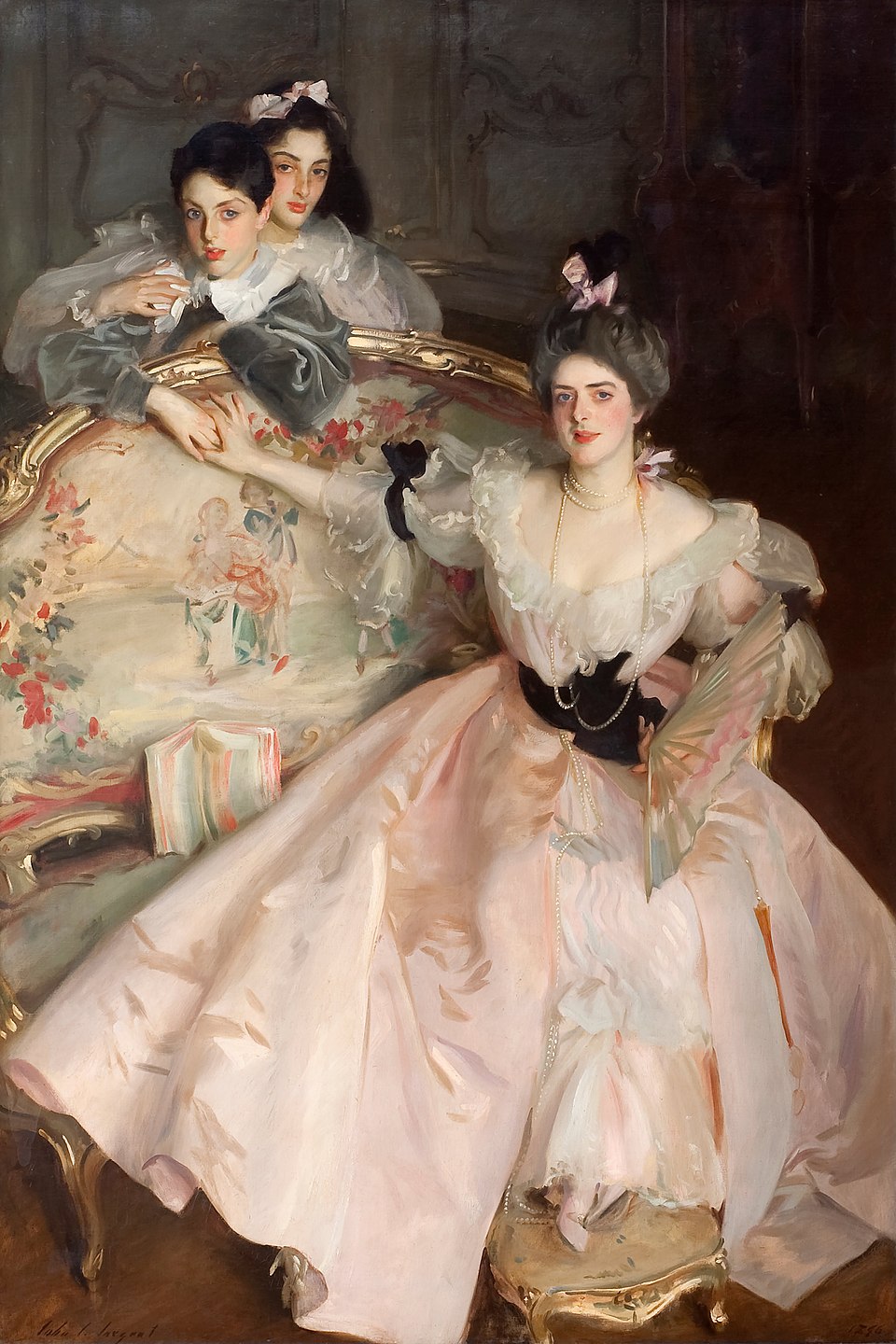
Opulence and dazzling brushwork in ‘Mrs. Carl Meyer and her Children’ by John Singer Sargent.
A Venetian Woman (1882)
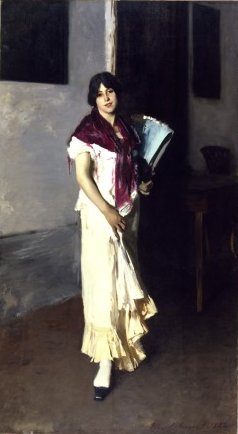
Description: Away from his grand portraits, Sargent loved to paint everyday scenes he observed on his travels. This painting captures a quiet moment in a dimly lit Venetian interior. A woman, likely a local worker, stands in a doorway, her expression thoughtful and unguarded. It’s a glimpse into the real life of the city, beyond the canals and palaces. The model for this painting was Sargent’s favorite Venetian model, a young woman named Gigia Viani, who appears in several of his works from this period.
Painting Techniques: Sargent masterfully uses a dark, moody palette to create a sense of intimacy and mystery. The loose, gestural brushwork and focus on light coming through the doorway show his ability to capture a fleeting moment with incredible skill and atmosphere.
Location: Cincinnati Art Museum, Cincinnati
Estimated Value: Priceless
Inspiration and Legacy
John Singer Sargent was deeply inspired by the old masters, especially the Spanish painter Diego Velázquez, whose influence can be seen in Sargent’s dramatic use of light and dark and his formal compositions. He also admired the Dutch painter Frans Hals for his lively and energetic brushwork. Sargent’s own legacy is immense; he set a new standard for portraiture. His dazzling technique and ability to capture the psychology of his subjects influenced generations of portrait artists. While some modernists of his time dismissed his work as old-fashioned, his reputation has soared, and he is now celebrated as one of the greatest painters of his era.
Final Thoughts
John Singer Sargent was more than just a painter of rich and famous people; he was a master storyteller with a brush. He could reveal a person’s character with a single stroke and turn a simple scene into something magical. The enduring popularity of John Singer Sargent paintings lies in their timeless vitality and breathtaking skill. They are not just pictures on a wall; they are windows into the souls of the people he painted and a testament to an artist who was truly in a league of his own.
FAQs about John Singer Sargent
Why was John Singer Sargent so famous?
He was famous for his incredible ability to paint portraits that felt alive. His clients, who were often wealthy and influential, loved how he could capture not just their appearance but also their personality and status with his confident, dazzling brushwork.
What painting technique is John Singer Sargent known for?
Sargent was a master of the ‘alla prima’ (or wet-on-wet) technique, where he applied layers of wet paint without waiting for the previous ones to dry. This, combined with his energetic and visible brushstrokes, gave his paintings a fresh, immediate, and vibrant quality.
Did John Singer Sargent only paint portraits?
No! While he is most famous for his portraits, Sargent grew tired of them later in life. He was also a brilliant watercolorist and painted many beautiful landscapes and scenes from his travels, especially in Venice and the Alps.
Which John Singer Sargent painting is the most famous?
His most famous painting is arguably ‘Portrait of Madame X’ (1884). It became famous not just for its beauty and elegance, but for the major scandal it caused at the Paris Salon, which cemented Sargent’s reputation as a daring and brilliant artist.



